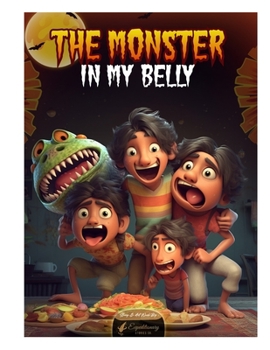The Monster in My Belly
The belly monster wasn't a real, tangible creature. It wasn't something scary or strange that lived within Samir. The monster was simply a fun, imaginative way they'd come to describe the growls and grumbles of an empty stomach. It was a symbol of hunger, and more importantly, it was a symbol of their shared love and care for each other.
Whenever Samir's tummy growled, his brothers saw it as a sign of the belly monster's arrival. They knew it wasn't a real monster, but an imaginative character that had come to life in their stories. It added excitement and a sense of adventure to their meal times, making even the ordinary act of eating an extraordinary experience.
The brothers loved their imaginative play, the belly monster brought them closer together, made their bond stronger. They learned to take care of each other, to respond to each other's needs, and to share the joy of their culinary heritage. While the monster was a creation of their vibrant imagination, the love, care, and brotherhood that it fostered were very real indeed.
In essence, the belly monster was a testament to the power of imagination. It transformed their daily routine into a series of exciting adventures, it added laughter and excitement to their meals, and it taught them invaluable lessons about love, care, and family.





